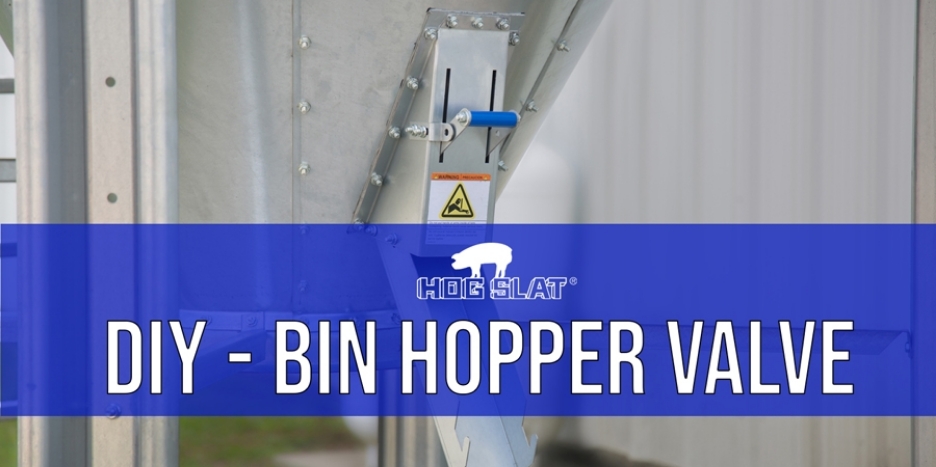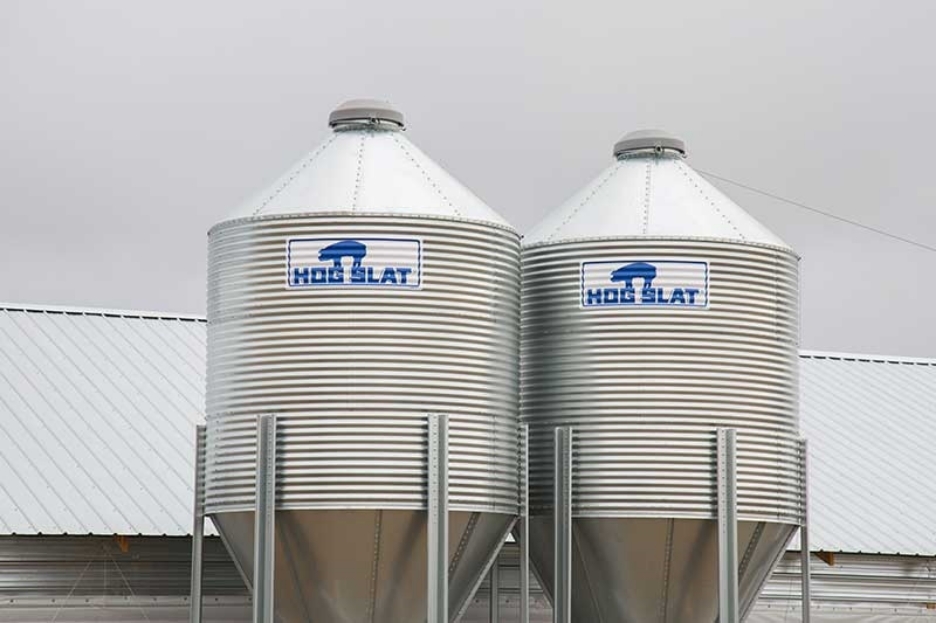Blog posts tagged with 'feed bins'
 Hog Slat bins feature the industry's heaviest galvanized coating.
Hog Slat bins feature the industry's heaviest galvanized coating.
Steel corrosion, commonly referred to as rust, is an oxidization process occurring when iron in steel is exposed to oxygen and water. Rust causes steel to thin over time, reducing its strength and causing product failure.
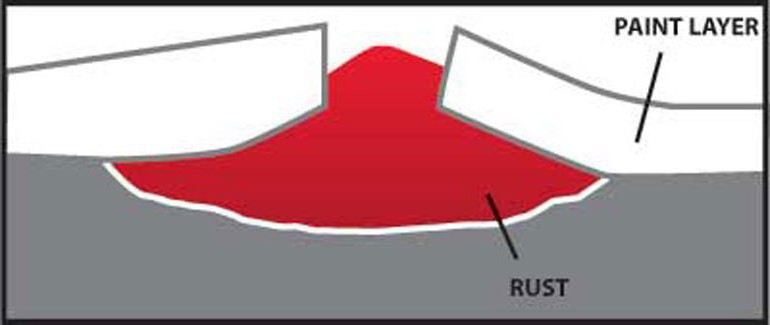 Paint coating protects steel from elements until damaged.
Paint coating protects steel from elements until damaged.
Any coating, which provides a barrier to moisture and oxygen, protects steel from corrosion. A painted surface provides an effective barrier until it is broken allowing moisture and oxygen to come in contact with the steel beneath. Rust develops at the breakage point and can even extend under the protective paint barrier.
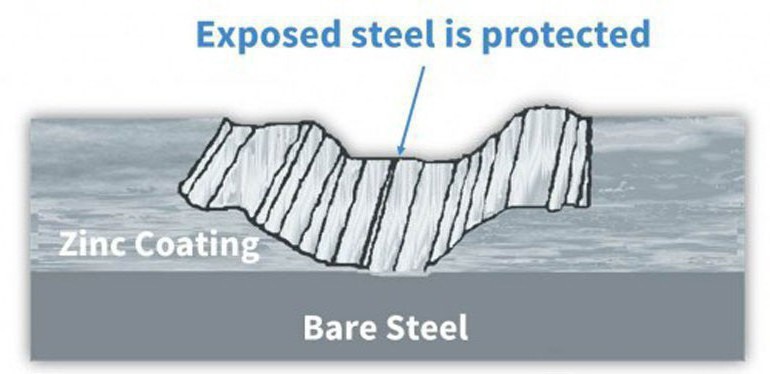 Galvanized coatings protect steel even when damaged.
Galvanized coatings protect steel even when damaged.
Similar to paint, a galvanized coating forms a protective barrier to protect steel from moisture and oxygen. Galvanized coatings also provide a second method of protecting steel by electrochemically "sacrificing" the zinc in the present of corrosive elements. In other words, the zinc corrodes, until it is depleted, instead of the metal underneath. Because it is physically bonded to the metal, galvanized coating does not allow rust to extend beneath its surface.
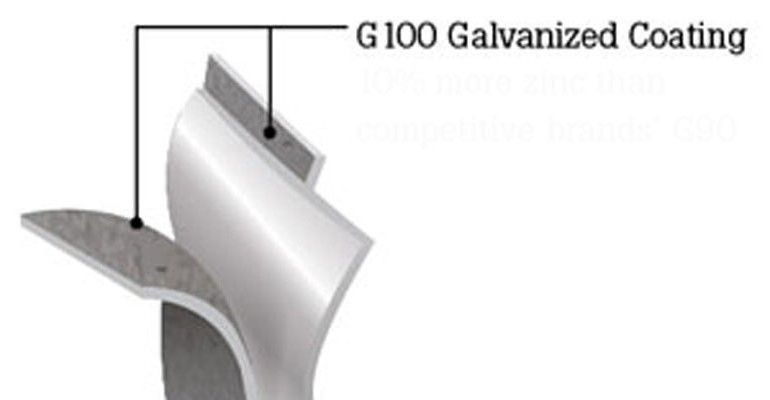 Heavier G100 galvanized coatings offer 10% longer service life.
Heavier G100 galvanized coatings offer 10% longer service life.
Galvanized coatings are expressed in ounces per square ft with conventional coatings designated as G30, G40, G60, and G90. These refer to thickness of .30, .40, .60 and 90 oz./ft2, respectively. Corrosion resistance is directly proportionate to the amount of zinc coating on the steel. Therefore we would expect the service life of G90 steel to be roughly three times that of G30 in the same environment. Likewise, increasing the galvanized coating on a feed bin from G90 to G100 increases the bin's service life by 10%.
Galvanized steel is an excellent choice for use in feed bin fabrication, as it does not degrade when exposed to the sun's ultraviolet rays like painted coatings or poly bins.
In addition to heavier galvanized coatings, Hog Slat bins are manufactured from stronger Grade 55 steel, come with an improved ladder design and water deflecting Weather Edge™. Every bin is backed by an extended 5-year warranty. To see more go to Bulk Feed Bins.

How can we make the claim of selling the strongest, heaviest feed bins on the market at the best possible price to swine and poultry growers?
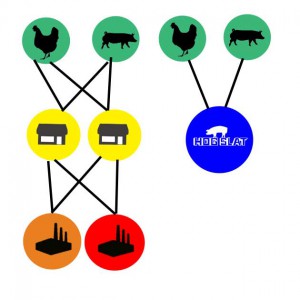
Traditional multilevel supply chain vs. Hog Slat’s Direct Distribution
Simple. Our direct distribution system eliminates the additional markup that dealers have to add to the bin’s price. Instead, that money goes back into building a stronger bin manufactured from heavier steel. These longer lasting bins are built with 5-10% more steel, by weight, than competitive brands.
Compare the features.

Most manufacturers only use 50,000 psi structural steel for the bin sheets and legs to reduce costs. Hog Slat bins are constructed entirely of GRADE 55 structural steel. The bin sheets, legs, roof sheets, bottom cone sheets…the entire bin.
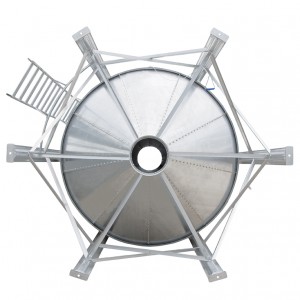
Heavy, dent resistant bottom cone sheets.
The bottom cone sheets of a bin are subjected to extra abuse from hammers and mallets used to dislodge bridging feed. That’s why we used thicker steel to resist dings and dents.
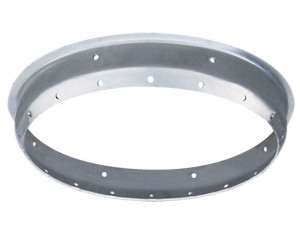
Heavy 10 gauge collar
We build the bin collar out of heavier 10 gauge steel to eliminate having to add additional reinforcing collars. The collar is stamped to reduce variations in dimensions compared to rolled or spun collars.
Every Hog Slat / Georgia Poultry bin is manufactured in-house for complete control of raw material purchasing and manufacturing operations. Our facility includes state-of-art rolling, stamping and finishing machinery to ensure precise fit and finish.
Get a quote on your next bin and see for yourself. Call 800-949-4647, go online www.hogslat.com or stop in at a local Hog Slat or Georgia Poultry store. (click for store locator)
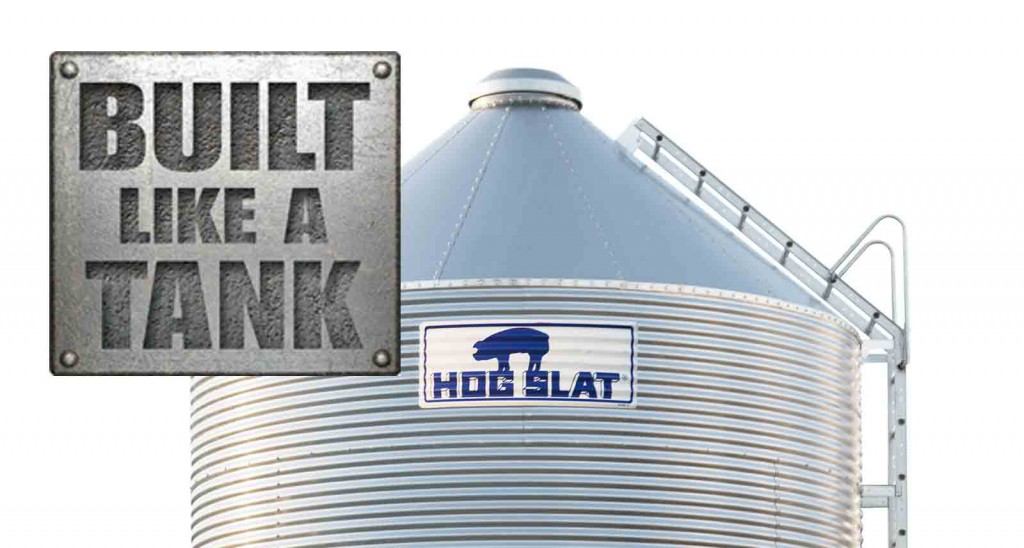
Heavier bins, Stronger bins. Bins designed to last longer.

It starts with the selection of steel. Most feed bins are built from a mixture of steel grades. The sidewall sheets and legs are manufactured from Grade 50 structural steel (50,000 psi) while the other components are produced using a commercial grade type B steel (33,000 psi) The entire Hog Slat bin is manufactured using only Grade 55 Structural Steel with a superior strength of 55,000 psi.
We use stronger steel in the smallest part of our bin than the competition does in their most critical components.
We didn’t stop there.

We also use heavier gauges of steel in every part of the bins; including thicker bottom cone sheets, that resist dents from hammers, to bin collars over four gauges thicker than competitive brands.
Our state-of-the-art, in-house manufacturing allows us to produce heavier, stronger products with precision for ease of assembly and proper fit along with features designed to protect both the operator and the stored feed.
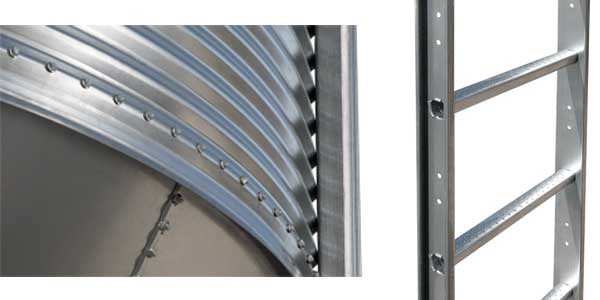
Our improved WeatherEdge™ design directs water away from the hopper, and rounded trapezoid ladder rungs provide for secure footing, exceeding OSHA safety standards. Hog Slat feed bins also feature a spring loaded lid that folds flat, below the fill ring, to protect it from damage during filling.

We are so confident of the quality of the bins that we offer the industry’s best warranty, an extended FIVE-YEAR warranty.
In addition to the great design and durable construction, one of the most important features of our feed bins is the local assembly, delivery, and service provided by our extensive store network. Our local stores selling directly to the end-user allows us to help eliminate extra costs and add value that makes choosing your next feed bins a simple choice.
Longer-lasting bins, a better warranty and local service.
Get a quote on your next bin and see for yourself. Call 800-949-4647, go online www.hogslat.com or stop in at a local Hog Slat or Georgia Poultry store. (click for Store Locator)
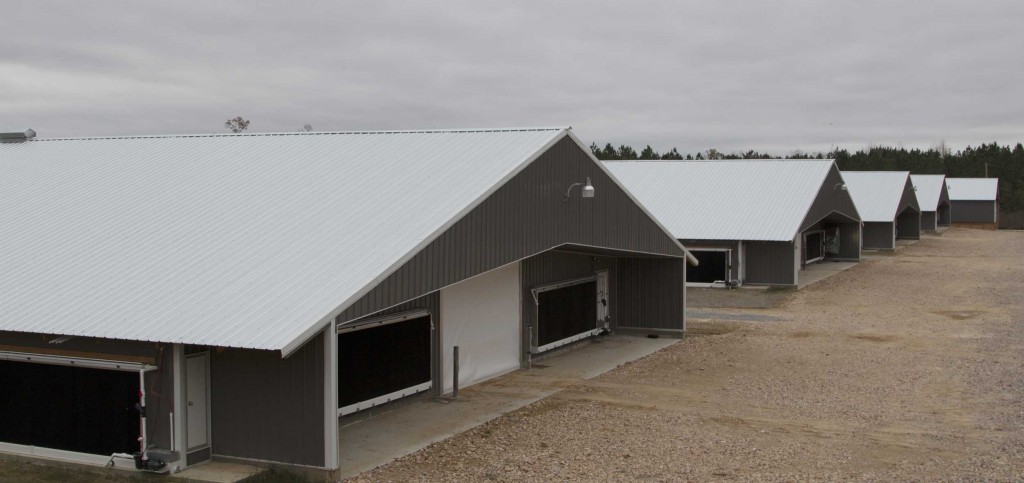
Broiler houses at a Georgia farm.
When it comes down to it, the cost of manufacturing a high-quality product is the same for most companies producing equipment for the livestock and poultry markets. Most companies have identified the most efficient methods to build an anchor bearing, motor, feeder, nipple waterers, etc.
The real cost difference comes from the delivery of those products to the end user. The standard model of distribution, in our industry, involves a manufacturer producing a product line, warehousing it, and employing a sales force to establish a dealer network.
The dealer network stocks the equipment, maintains a storefront, hires salespeople, installs, and services the production systems in a local area for the brand of equipment they represent.
This particular type of distribution model has changed very little over the history of the livestock and poultry production industries. Each member of this distribution model is an independent business entity and is free to add whatever margins they deem necessary (or possible) to the final cost a producer pays.

GrowerSELECT supply chain removes extra margins to reduce the final cost to end users.
Sold through a different type of distribution model, GrowerSELECT goes directly to livestock and poultry growers through our network of regional local stores. Because we own the distribution chain from top to bottom, we add only ONE MARKUP over our cost.
Our cost is based on finished goods plus ONE MARKUP vs. MULTIPLE MARKUPS from the typical distribution model.
Also, we would suggest that we are the low-cost producer for most products. Wait a minute; the first paragraph said the cost of manufacturing was the same for everyone.
True. But if a brand has a loyal dealer network, the pricing to the dealer network will not be challenged. A loyal dealer will continue to buy brand name products even if the cost is excessive.
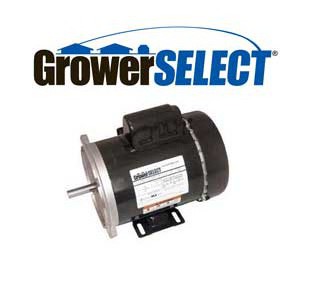
GrowerSELECT auger motor with 2-year warranty.
Name brand motors are a perfect example of this. An auger or fan company buys a motor from a motor manufacturer, puts their logo on it and sells it to a local supplier. The local supplier sells the motor to the end user adding little value to the final price. A local supplier has few other options. Their volume of a particular motor isn’t high enough to go directly to a motor manufacturer, and they have little negotiating power with their chosen brand vendor. The brand company has little incentive to lower the cost to a loyal dealer network. In fact, a brand company can charge different prices in different geographical locations depending on market pressure.
Compare this with GrowerSELECT motors. Our network of over 70 store locations and turnkey construction business allows for large purchases of motors direct from a manufacturer. We forecast purchase amounts for each store location and ship directly with minimal warehousing cost. Local retail pricing continually drives us to buy at a more competitive price.
The conventional distribution chain is directed from the TOP DOWN versus the GrowerSELECT model which is driven from the BOTTOM UP. Lower pricing for comparable products is the result.
The GrowerSELECT distribution model also affects product responsibility. Because we interact directly with the end users, we deal directly with any problems arising with the installed products. We sell it; we service it, and the end user works with one company.
The traditional marketing chain allows room for some question regarding who is responsible for dealing with equipment failures when those problems arise. The manufacturer can blame poor installation, dealer system design, or a number of other reasons (excuses) for a product’s failure. A local supplier can blame the brand company for poor design or manufacturing flaws. The GrowerSELECT distribution system eliminates “finger pointing” and focuses on providing accountability to each and every customer.
 Our customers produce commodities. The lowest cost commodity producer is always the most successful. Our mission is to provide our customers long term value at the lowest possible cost.
Our customers produce commodities. The lowest cost commodity producer is always the most successful. Our mission is to provide our customers long term value at the lowest possible cost.
Ask yourself this question; “Are all the manufacturers, distributors, dealers, installers, and service personnel creating ADDED VALUE in the distribution chain I buy from?” If you hesitated while answering that question, take the next step by changing the way you buy and implementing GrowerSELECT equipment into your operation.
To contact a sales representative in your area or find our nearest locations to you, click here.
Hog Slat will be exhibiting at this year’s World Pork Expo with many new and further developed swine equipment products, highlighting Hog Slat’s GrowerSELECT product line.
At the show, Hog Slat will have a large variety of equipment on display in both the exhibition hall (Booth V165 VIB) and at the Hog Slat hospitality tent (Tent G234). Equipment that will be on display includes Hog Slat’s Grow-Flex Feed System, Grow-Disk Feed System, Slats, and an introduction to Hog Slat’s AirStorm fans. We invite you to stop by the Hog Slat booth to see what’s new at the show.
Enjoy FREE ADMISSION to the 2015 World Pork Expo, courtesy of Hog Slat. You may redeem your admission voucher by registering online at www.worldpork.org by May 28th and use voucher code HogSlat2015. Or, present a hard copy of our voucher (available through the Hog Biz, local Hog Slat retail stores, or your local sales contact) during on-site registration the day of the expo. Expo registration is located in the Animal Learning Center inside Gate 15.
Craving some good BBQ? Stop by the Hog Slat hospitality tent anytime during expo to enjoy Vinny’s BBQ, located in Dakota City, IA. Vinny’s will be serving lunch and dinner both Wednesday and Thursday of the expo.
The World Pork Expo is held June 3rd-5th in Des Moines, IA at the Iowa State Fairgrounds. Visit us at the show in booth V165 in the Varied Industries Building and Hospitality Tent G234. We hope to see you at the show!
Every once in while you run across a product that is such a simple answer to a problem that you just have to say “Wow, why didn’t somebody think of that a long time ago?”
The severe winter of 2010 had us looking for an answer to monitor feed levels in bulk bins. Remember that winter? Record snow, cold, windy…feed outages were a real problem. Nobody can or should climb an icy ladder in that kind of weather. There are some existing solutions like load cells and sonar systems, but we were looking for a simpler, less expensive way to check feed levels and protect against feed outages.
So we started looking into a ways to accomplish feed level monitoring…electronic sensors mounted in the bin walls, electric sensor cables hung in the bins, sonar bouncing devices from a fish finder…
One of the biggest problems that we kept coming back to was that all these methods required power be run to the bins to operate them. Extra expense……harder to install…more of a chance for break downs and failure to occur.
Then along comes the Bin Flag….

A simple, mechanical device that uses a paddle inside the bin to rotate a sight cylinder to indicate when material is present. Primarily used in industry applications to monitor levels in hopper for materials like sand, gravel, plastic beads…… it is the perfect device to measure feed levels for swine and poultry bulk bins.
It meets all the criteria we had established
1) No electricity to operate
2) Installs from the outside of the bin and you don’t need to lift the bin to install
3) Low cost
4) Flexible: basic method would be install a unit just above the cone to know when it is critical to order feed. Producers also have the option of adding additional Bin Flags for more advanced monitoring.
5) Very visible: big added bonus. You can visually see the Bin Flag from up to 200 feet away. You know in a glance from across the yard how much feed is in the bins….drive by a site and check feed levels from your truck seat. It doesn’t have to be cold for that to be a bonus.
There are more details online….go to http://www.hogslat.com/bin-flag-feed-level-indicator to order today.
There’s even a way to hook up Bin Flag to your existing alarm to call you when feed levels drop to a critical level. We’ll talk about that in the next blog or so.
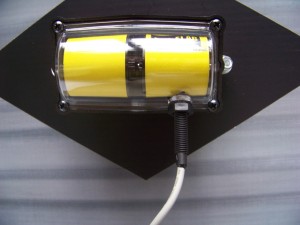
Okay I admit it…it has been awhile since we’ve posted a blog. But I have an excuse…We’ve been working on some new ad campaigns and new swine and poultry catalogs (which you can request a copy of here.) But now we are back…ourlast blog was about the Bin Flag and at the end we mentioned a way to connect it to a phone alarm dialer.
When you pair the Bin Flag with a alarm phone dialer you will receive a phone alarm whenever feed levels drop below the critical level. Setting the Bin Flag up with most alarm systems is a pretty simple process. Purchase the magnetic sensor for less than $20 (item #HDL59065-952) and screw it into the Bin Flag. You then run common phone wire from the sensor to a contact on the phone dialer. The alarm system will allow you to program a unique message that identifies each particular bin.
Really I’m not so sure this isn’t a more important feature than the visual part of the Bin Flag…normally you have to be at the building site and look at the Bin Flag. But with the Bin Flag connected to an alarm it calls you. So whether you are in the field, on the road, and wherever you have cell service you will be notified when a feed outage occurs and have to time to react and get feed ordered.
You can learn more about setting up the Bin Flag with the Sensaphone and Agri-Alert alarm systems by going to our website and reading the manual we have located under our Resources section.
The 2012 Pork Expo is in the books. Great weather this year and great food. Especially the 260 lb pork burger Vinny and crew from Hog Slat cooked up. This wasn’t just an inedible gimmick either…..the slice I had was very good.
Walking around the trade show, I noticed there were a few companies with products to address the bin bridging and feed outage problems caused by using DDGS and other alternative feed ingredients……mechanical bin whackers in other words. One rep explained that his product was a much better choice than his competitor’s model and “ours is only about $1200 compared to theirs at $2000.” Wow. The price of the anti-bridging device is almost as much as the bin.
Quite a few companies displayed their version of Electronic Sow Feeding (ESF). One says each feeding station will handle 60-65 sows, the next guy’s will handle 300. All the computerized systems are easy to use; intuitive I believe was the term they used. Everybody had a “system expert” who probably lives several states away from your farm.
Remember when everyone had to hook up their ventilation controls up to a computer in their office? Going to run the barn from the house was the idea. Most ended up with the plastic cover left on after a month or two. A couple of years ago, sorting scales were going to change the way finishing pigs were raised. Most of those are sitting outside rusting away now.
No doubt some producers will successfully adopt ESF technology. One thing is guaranteed, not all the companies offering ESF will be at this show five years from now. Choose carefully.
As livestock and poultry housing became larger and we developed more sophisticated feeding methods, the use of multiple bins in tandem was more common. While this set-up allowed for greater flexibility in feeding, the front bin of the pair was often prone to plugging.
If we look at the anchor bearing that is present in the rear bin, one would notice that it has a restrictor tube over the shaft. This restrictor tube fills the core of a flexible auger and prevents feed from filling the core and overloading an auger. This restrictor is not present in the front bin. When the slide is opened feed overloads the system faster than the auger will move it away. The obvious solution is to cut the opening down by closing off the slide to restrict feed flow. This can cause other problems as a feed flows tends to flow only down one side of the bin. A better solution is to use baffles in the boot to restrict feed flow. This works to prevent plugging but can cause feed bridging in the bin.
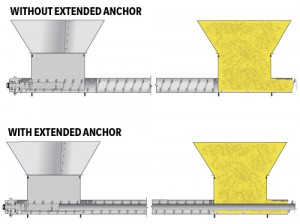
Over the last several years Hog Slat developed and tested a unique solution to this problem. The final product is called the Extended Anchor Bearing.
Described simply, the Extended Anchor Bearing extends the rear tube restrictor to the front bin. The auger core is filled in and feed cannot overfill the system.
The Extended Anchor Bearing ships complete with a 14’ restrictor tube, replacement bearing and fastening hardware. The 14’ restrictor tube is cut to length and inserted it the auger core. The new bearing is installed and the auger reattached.
If an extended anchor bearing would help you prevent auger overload, visit the Hog Slat website to find the model that fits your flexible auger fill system.
- 2024
- 2023
- 2022
- 2021
- 2020
- 2019
- 2018
- 2017
- 2016
- 2015
- 2013












 Україна
Україна Méjico
Méjico